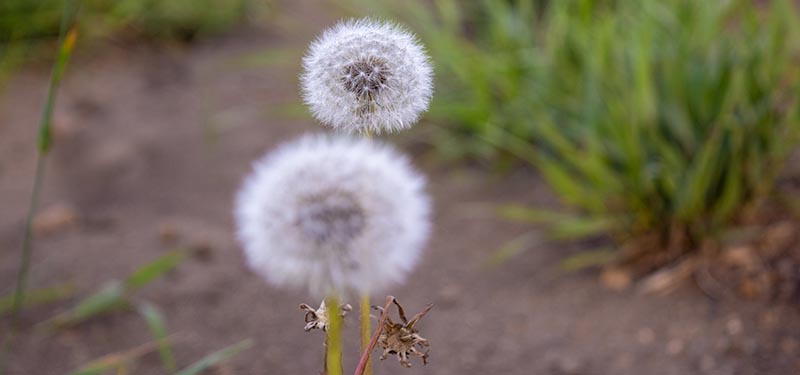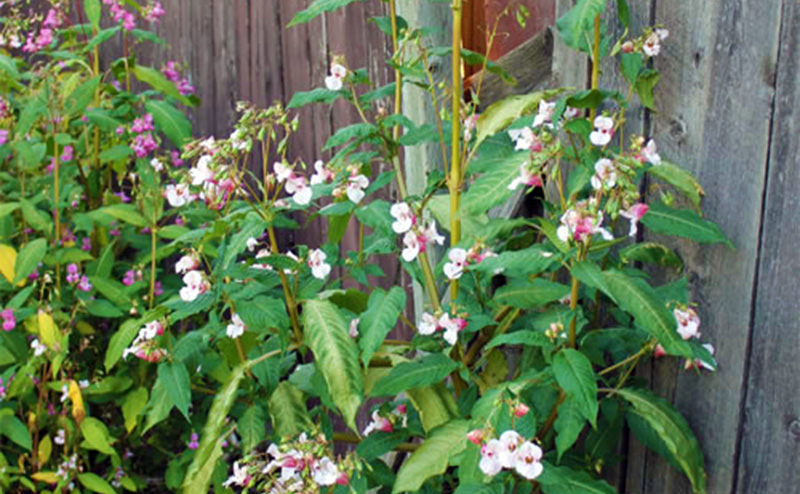An invasive weed is a plant that comes from a different place of origin other than Alberta. However, not every introduced plant becomes invasive. Characteristics of plants considered invasive are:
- They out-compete native plants for resources
- They lack predators and pathogens in the areas to which they were introduced
- They grow and spread quickly, produce abundant seeds and can form a dense stand of single species (a monoculture)
- They infest streams, riverbanks and waterways as well as terrestrial ecosystems
- They reduce biodiversity and disrupt the balance of local ecosystems
A lot of invasive plants were introduced to Canada as ornamental garden plants because they are beautiful. Sometimes introduced ornamental plants escape from gardens and farms (seeds, creeping roots, movement of infested soil or plant pieces) into natural areas, where they become invasive.
The Alberta Weed Control Regulation defines a list of regulated weeds that need to be controlled or eradicated by property owners. There are 46 prohibited noxious weeds that should be destroyed when found, and 29 noxious weeds that should be controlled and prevented from spreading. The term “noxious weeds” is sometimes used by the media and the public to refer to all the regulated weeds.
Adhering to the Integrated Pest Management Policy C501A, the City of Edmonton will prioritise preventative methods of pest management and will support long-term management of pests, such as weeds, using a combination of techniques including mechanical and physical treatments, biological control, habitat manipulation and judicious application of pesticides.
The City of Edmonton has a Herbicide Ban Motion in place to eliminate non-essential use of herbicides on city-owned land. However, there are exemptions that allow for their use. Herbicides are used to:
- Ensure City infrastructure is safe and well-maintained. This includes use on sewer pipes, storm water facilities, concrete surfaces and along LRT routes.
- Maintain cemeteries, bowling greens, premier sports fields, as well as parkland used in high-profile events.
- Manage regulated weeds listed in the Alberta Weed Control Regulation.
In 2015, City Council approved the Herbicide Ban Motion to ban cosmetic use of herbicides. Dandelions are not regulated weeds in Alberta and as such, mowing is the current best practice for maintaining these. The frequency of mowing will vary depending on land use and service level, please visit Parkland Care for more information.
Bylaw 14600 (Community Standards Bylaw) states that land owners should not have “unkempt grass or weeds higher than 10 centimetres”. This is why residents should control weeds in general.
Both private and public property owners are regulated by the Alberta Weed Control Act, which defines a list of regulated weeds that need to be controlled or eradicated by property owners. If you need help with identifying weeds, use the Weed Identification lookup tool or the online service (information only) or download the Edmonton 311 app.
For regulated/noxious weeds like Creeping Bellflower, pull these plants from the root and put them in the black garbage cart. Never place noxious weeds in your green food scraps cart or home compost. Mixing noxious weeds with your other yard waste risks spreading viable plant parts.
For yard and garden trimmings that do not contain regulated/noxious weeds, place them in the green food scraps cart or yard waste bags for seasonal pickup.
For help identifying weeds, use the Weed Identification lookup tool or the online service (information only) or download the Edmonton 311 app.
Please note that a weed identification request is not used to make complaints. It will not prompt actions from bylaw officers or operational teams.
- You can call 311 or submit a complaint online or on the Edmonton 311 app.
- During the growing season, there are two service requests that can be submitted online and on the Edmonton 311 app including “Noxious weeds - private property” and “Noxious weeds - public property”. Please note that these requests are intended for regulated weeds only.
Creeping Bellflower is listed as a noxious weed in the Alberta Weed Control Act and property owners are required to control its spread. To do this, remove the plant and dig out as much of the root as possible.
The sooner new growth is removed, the less energy can be stored in the roots of the plants. Over time, you will starve out the roots. If you can not get the whole population out, make sure to remove flowers before they produce seeds to stop seeds from going into the soil.



